We’re still in Africa, but have moved cross-continent to the northeast, and the country of Eritrea. There was no such country when I was growing up. Eritrea was a confederated region of Ethiopia that was undergoing a movement for independence, but that didn’t come to fruition until 1991. Located on the Red Sea, it’s a small country of 46,000 square miles, basically the size of Pennsylvania. Its population is 3.6 million – a third of the population of Pennsylvania. Half the population are Tigrinya, and almost a third Tigre, both indigenous populations, and Tigrinya is the main official language of the country, along with Arabic. English is also in common use. Some 95% of the people are Muslim, the balance mostly Christian.
The flag has three triangles: red, blue, and green. The five points representing unity, liberation, justice, democracy, and progress. In the red triangle, a gold wreath symbol with 30 leaves that symbolize the number of years spent in civil war before achieving independence.
Food-wise, coffee is probably the most important cultural tradition in the country, and people drink it throughout the day. Social and business events are punctuated by ceremonial drinking of coffee. The culinary milieu is contiguous with Ethiopia’s, given their shared heritage under various external rulers, albeit with different tribal or indigenous touches. And, Eritrea, being coastal, has more seafood in its cuisine than Ethiopia does. The grain teff is quite common, and, like Ethiopia, injera bread made from fermented teff flour is a daily staple.
So it was obvious that I was going to make Injera, assuming I could find teff flour, which turned out to be readily available at several local dietéticas. The soup turned out to be a little more difficult. Not because Eritrea doesn’t have soups, but because it seems that all of their soups are cooked down to a thicker, stew-like state, in order to use injera to scoop it up, rather than eat them with a spoon. So I went with the country’s national dish, Zigni, for which I actually found a few folk who make it more soup-like, as I ended up doing.
So, there seems to be some disagreement over the flour used in injera, though I’d chalk that up, after reading numerous posts about it, to traditionalists versus modernists, or maybe to those who are patient versus impatient. Quite a few recipes advocate only using teff, which has to be fermented in order for its nutrients to be digestible for humans, and generally advocated about a week long process for its fermentation. Others went with a shorter fermentation period, and using around 2:1 wheat flour to teff flour, as the wheat ferments faster and drives the process, resulting in only about 2-3 days of fermentation needed. I went that way. So, 2:1 bread flour to teff flour, here, 2/3 and 1/3 cup, plus an equal volume of water, so 1 cup, and a 1/4 teaspoon of salt.
Mix the flours and water together (not the salt, reserve that for later) and put in a covered bowl in a warm place for 2-3 days. Do not stir it up after the initial mixing. It will get bubbly, and start to separate, leaving a rather icky looking liquid atop, with the flours fermenting in a layer below.
Most of those presenting recipes recommended spooning out that layer of liquid, as much as you can, leaving behind a pancake batter sort of texture. Add the reserved salt.
Teff, it turns out, absorbs like a sponge, especially oil. I first put in about a quarter cup into and oiled pan, and it just sucked that up, making a greasy mess.
So I redid it without oil. It’s also a bit delicate, and difficult to flip, so it took me a couple of tries to get it right, or at least acceptable.
The amount of batter I made should have made six injera, but three of them ended up in the trash. Not too bad for a first stab at this.
On to our zigni. We’ve got stewing beef – suggested was shin bone beef, but that’s not easy to come by here, other than in osso buco form, and I didn’t feel like cutting all the meat off of pre-cut osso bucos. So this is shoulder meat, around a kilo. Two large onions, a bunch of garlic cloves, a good sized piece of ginger, some roasted peppers, and some peeled and canned tomatoes (I ended up using just one can instead of two, visually it just looked like too much tomato). And the final thing, berbere spice. Not available here as far as I can determine, so I made my own from this recipe. But basically a blend of chili powder, paprika, salt, ginger, turmeric, allspice, cinnamon, nutmeg, coriander, fenugreek, ajowan (an Indian spice similar to cumin), nigela (black onion seeds), pepper, clove, cardamom, basil, and rue (or other dried bitter green herb, like dandelion). Whew! It’s delicious. I’ll be keeping a bit of that on hand.
Brown the beef, onions, garlic, and ginger in a little oil.
Add the tomatoes, peppers, and berbere. Top with water or beef stock.
And, simmer away for about 2-3 hours, until the meat is falling apart tender. If I was making this more as a stew, I’d have let it simply cook down until thick and most of the liquid gone – some folk do it over low heat, or in an oven, for as long as 6-7 hours. I had to top it up a little with more stock as needed to keep it soup-like.
And, dinner. We loved the zigni. One of the best beef soups I think I’ve ever had, and Henry, and our next door neighbor, agreed. And first stab or not, we really liked the injera. I’ve had injera at the occasional Ethiopian restaurant over the years, and never really liked it – it was always served as a much thicker pancake, and near tasteless. These were delicious, and had we made this stew-like, the perfect sort of texture for using it as a scoop. I might add a little more salt to it, but other than that, very happy.
Next time, we’re off to Eastern Europe and Estonia.
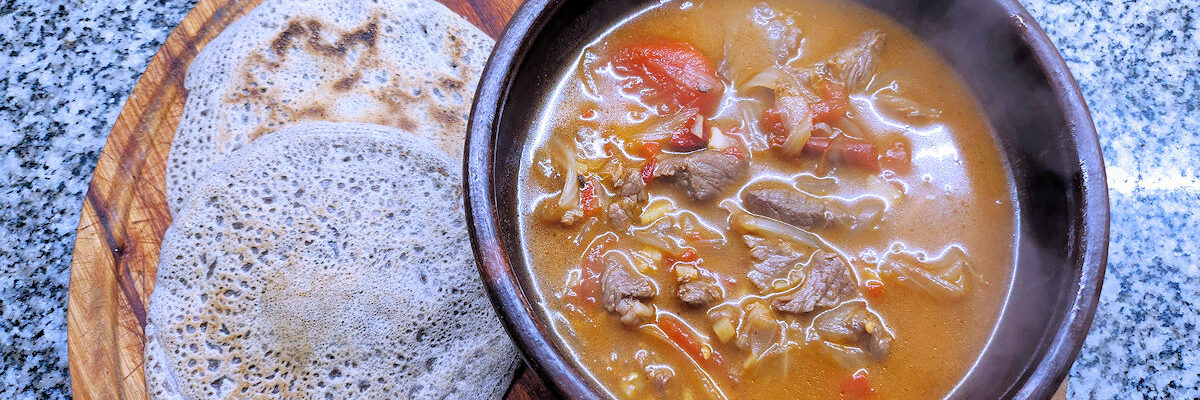
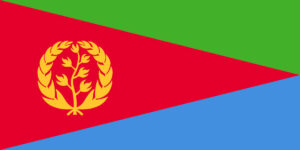

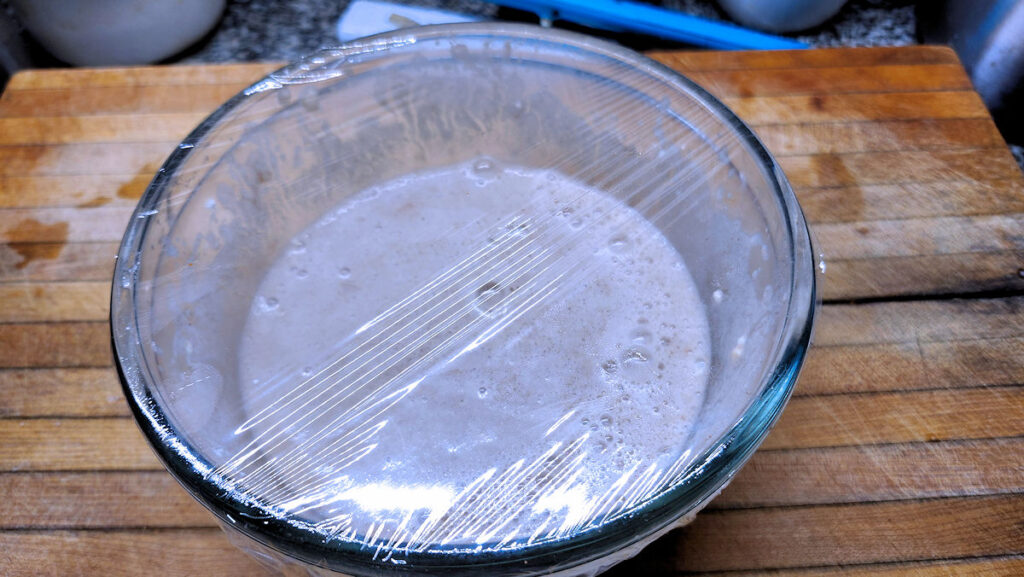
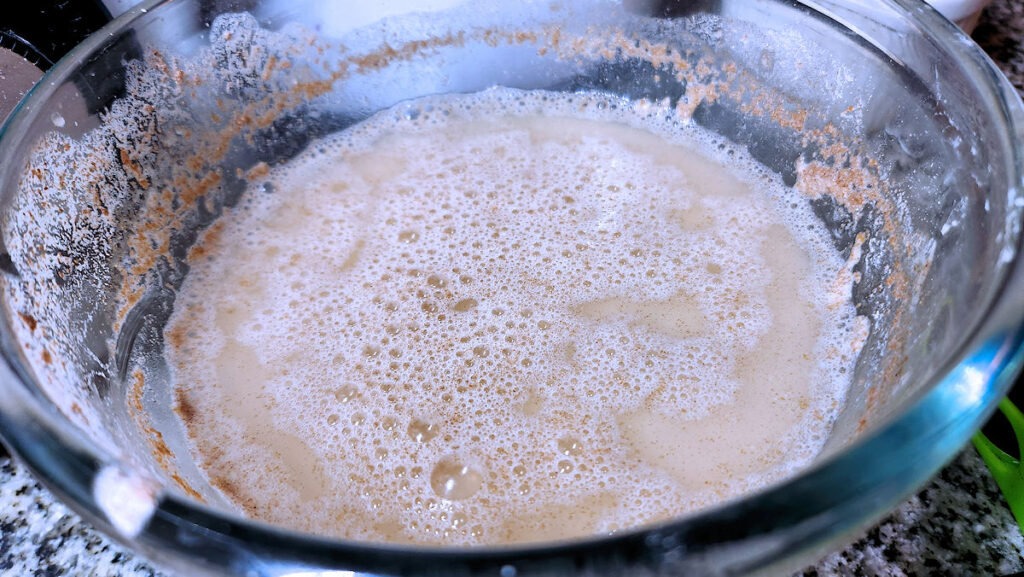
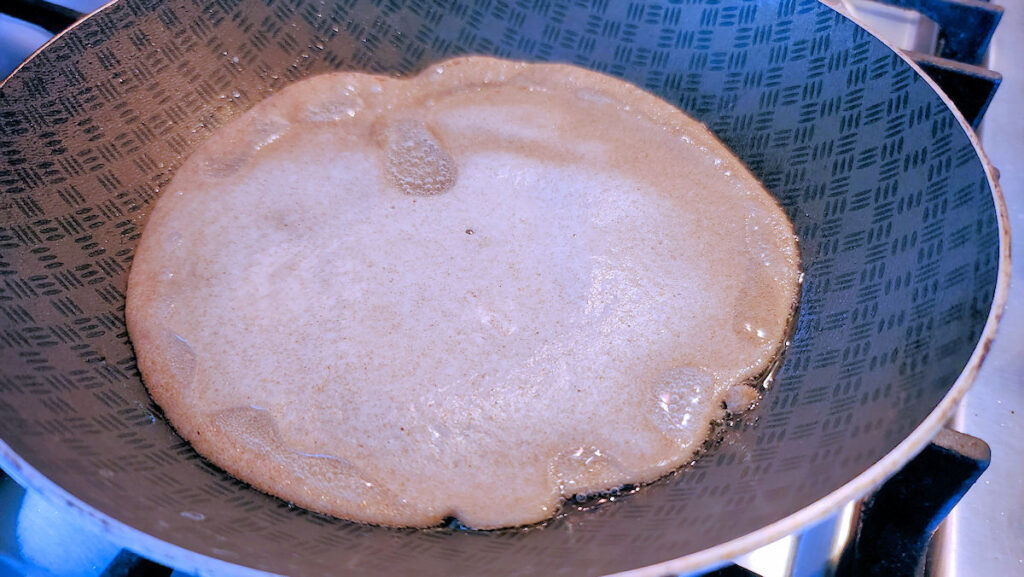
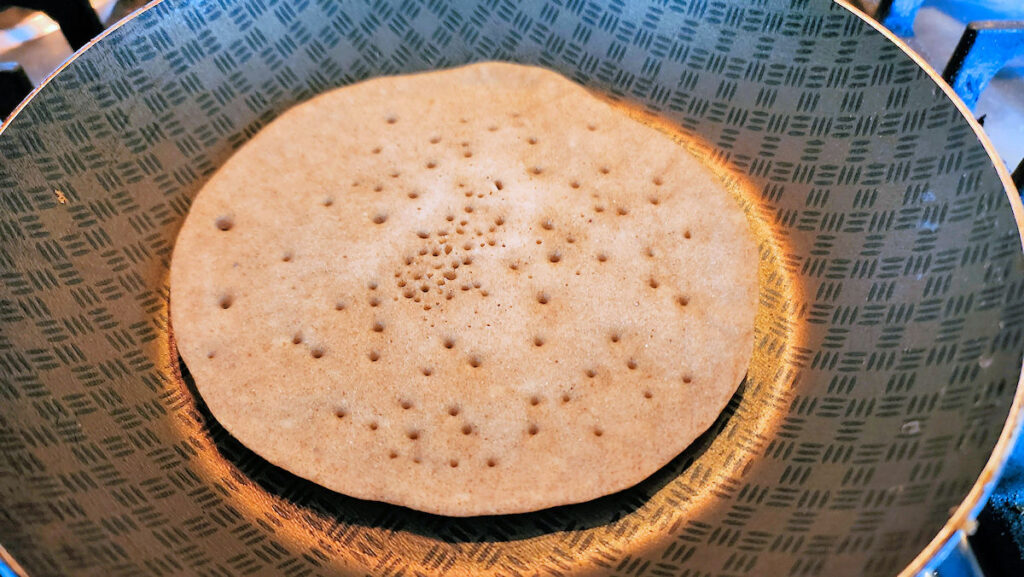
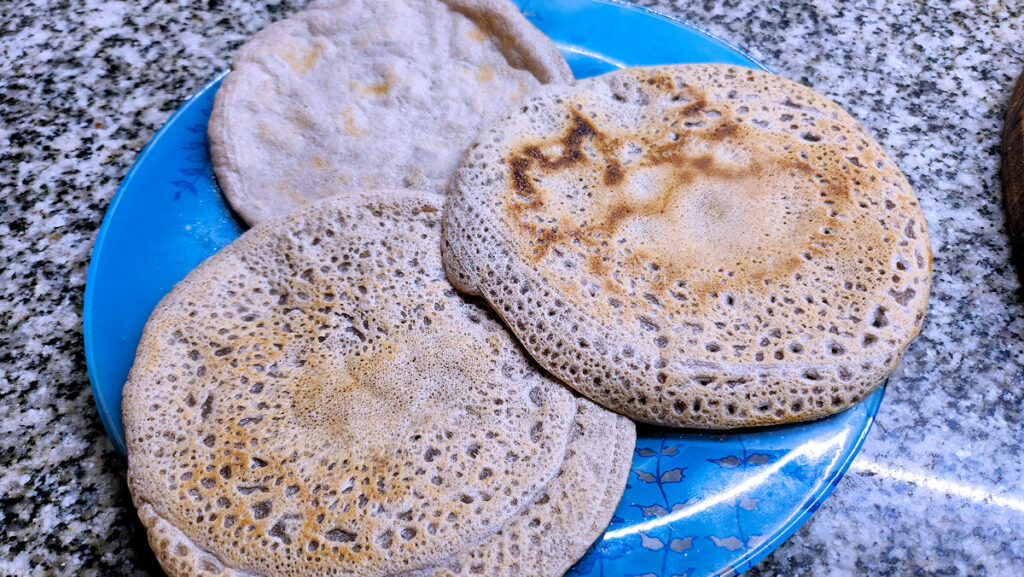
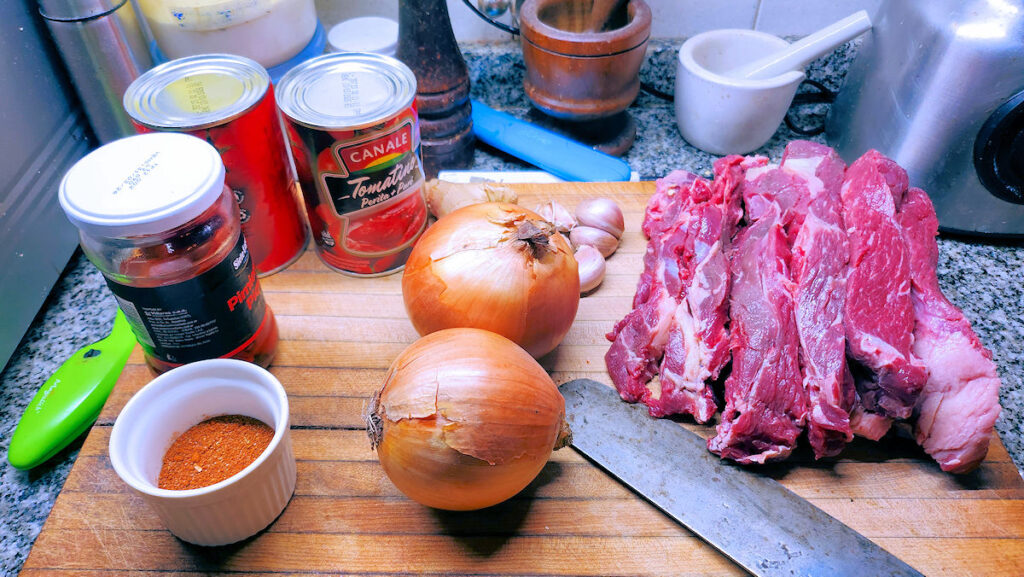
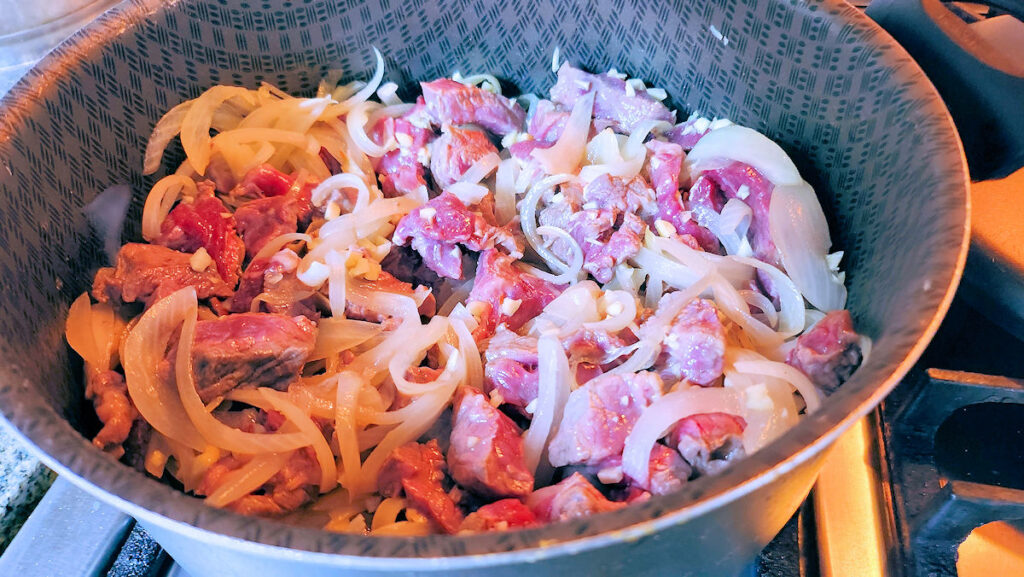
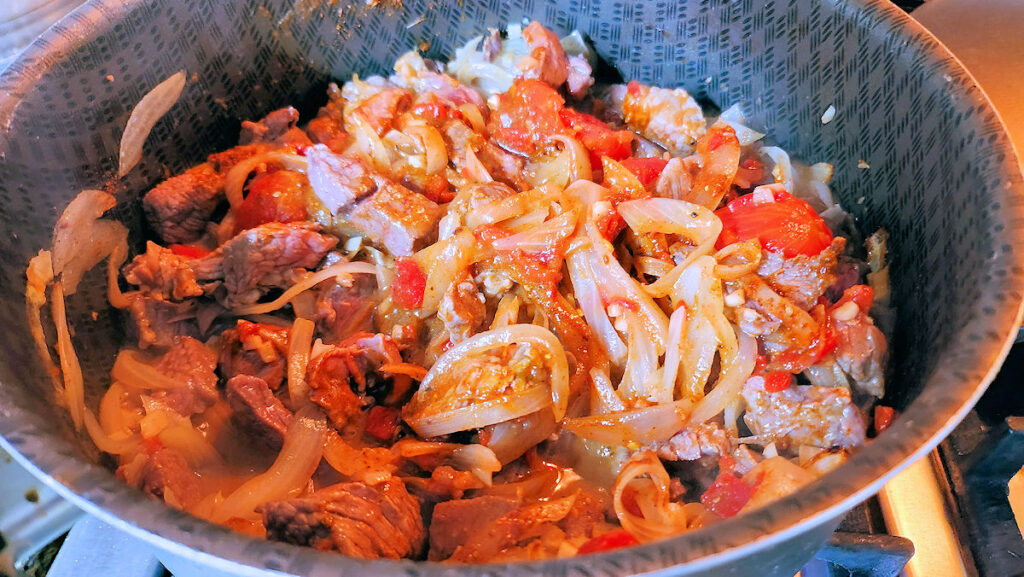
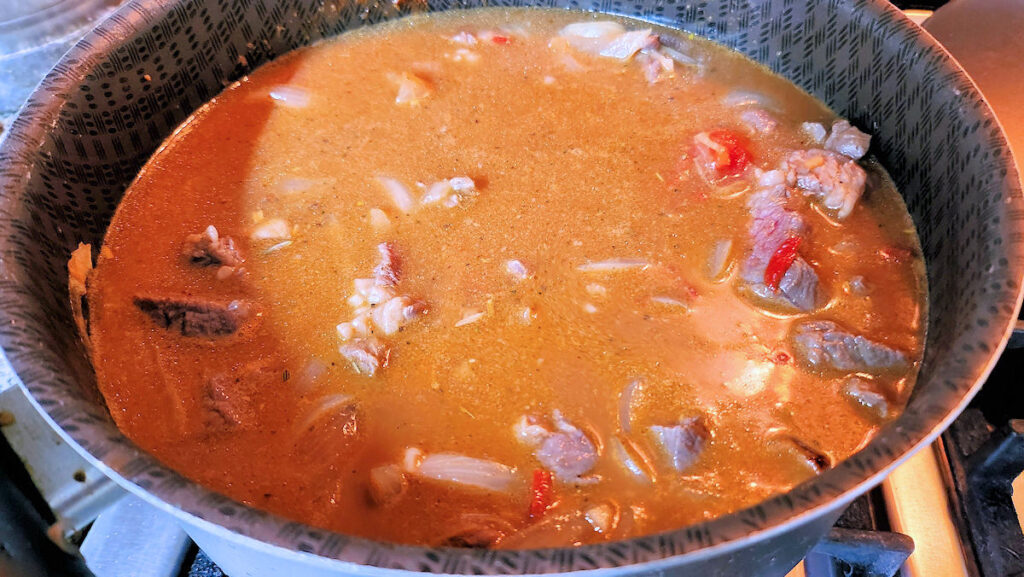
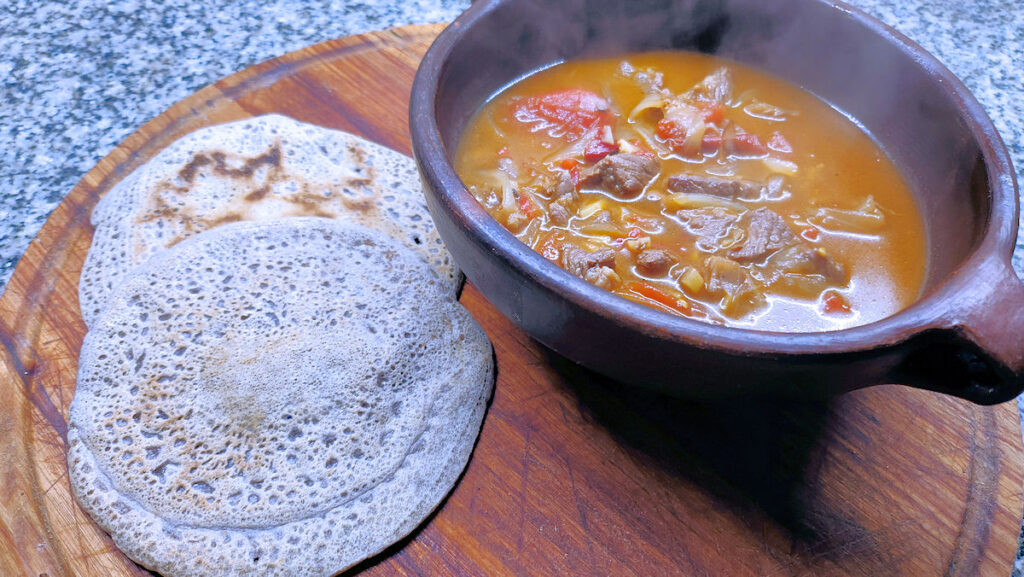
[…] had a good amount of the berbere spice mixture from the Eritrean entry in our Bread & Soup Project. So I made a slow braised chicken dish – boned out chicken […]